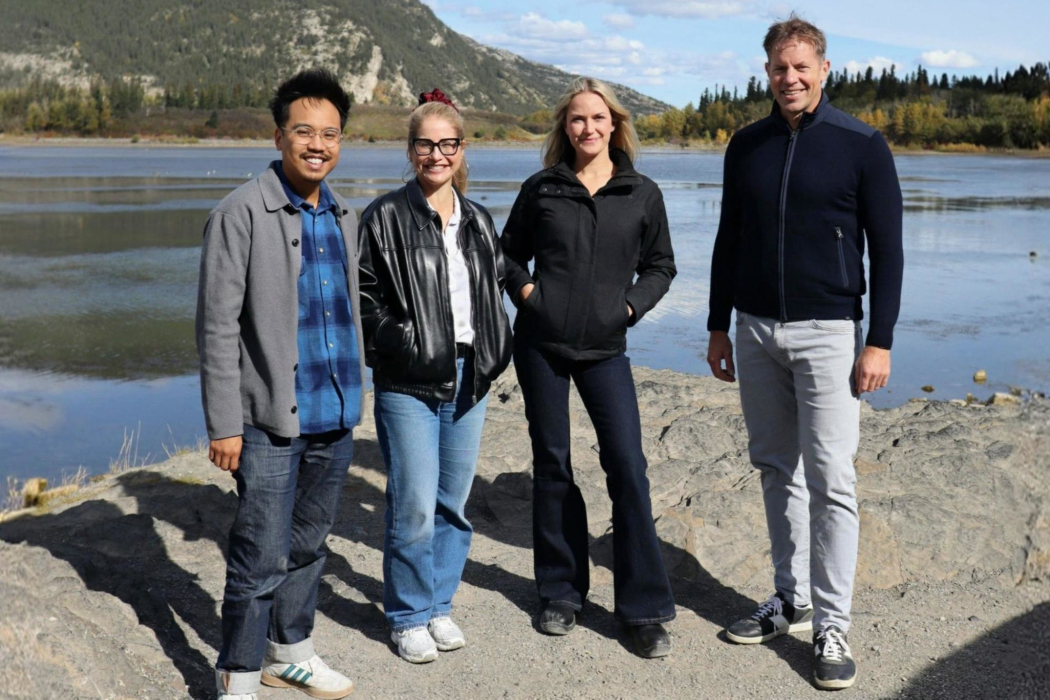Science
Former Deep Sky Executive Launches Cement Decarbonization Startup

Phil De Luna, the former Chief Science and Commercial Officer at Deep Sky, has co-founded a new startup named Cura, which focuses on decarbonizing the cement industry. He has partnered with Sabrina Scott, a researcher from the University of British Columbia (UBC), and Erin Bobicki, co-founder of Aurora Hydrogen and its former Chief Technology Officer. This venture aims to revolutionize cement production by significantly lowering its carbon emissions.
In an interview, Bobicki explained that Cura’s innovative approach utilizes electrochemical technology to extract carbon dioxide from limestone using electricity instead of fossil fuels. This method is termed “pre-calcination carbon capture.” Bobicki stated, “We believe that we can get under the cost to produce conventional cement, whereas most other technologies require a green premium.”
The Vancouver- and Calgary-based startup emerged from stealth mode and aims to tackle the substantial carbon footprint of cement production, which accounts for approximately eight percent of global carbon dioxide (CO2) emissions. Traditional cement is produced by heating limestone, a process that emits significant amounts of CO2.
Cura is developing an electrolyzer that can split limestone into lime, an essential component for cement, while also producing pure CO2 that can be repurposed in various applications. The company claims its technology has successfully scaled to a prototype level, with the potential to reduce CO2 emissions from cement production by up to 85 percent. Bobicki noted, “The only thing that’s really ready to go is point-source carbon capture and storage, and the challenge there is it tends to be very expensive.”
The startup has thus far been self-funded but is currently raising capital to establish a pilot facility capable of producing 100 tonnes of cement per year. This facility is expected to be operational within the next 12 to 16 months in either British Columbia or Alberta. Additionally, Cura has plans to launch a demonstration facility with a capacity of 10,000 tonnes per year within three years and aims to implement its technology at a large-scale cement plant within five years.
Cura has already formed partnerships with an international infrastructure developer to test its cement on large-scale projects. The company is also in discussions with cement manufacturers to pilot its technology, with the goal of integrating it directly into cement production processes.
De Luna, who serves as Cura’s Chief Technology Officer, expressed his motivation for leaving Deep Sky, stating that he wanted to create a company of his own. He emphasized that his departure had no connection to any doubts about Deep Sky or direct air capture technology. “I was the third hire, and [Deep Sky] taught me a lot about what it means to build a high-growth company,” he said. He described his time there as a stepping stone, indicating he had been waiting for the right opportunity to emerge, which he found in Cura.
De Luna also acknowledged the challenges facing the direct air capture (DAC) market. As he noted, the current revenue model primarily relies on carbon credits, which can be difficult to sell in the present economic climate. He remarked, “The reality is there are over 150 DAC startups right now, and the market can’t sustain all of them.” Despite these challenges, he maintains that DAC is crucial for Canada to meet its net-zero emissions targets by 2050.
As the demand for substantial energy and transportation infrastructure in Canada grows, De Luna believes that solutions like Cura’s will play a vital role in achieving sustainability goals. He pointed to initiatives led by Prime Minister Mark Carney aimed at expediting project approvals as a way to stimulate the economy. “All of these projects will require cement,” he stated, emphasizing the importance of integrating decarbonization technologies into foundational industries.
In this context, De Luna highlighted Canada’s opportunity to lead in climate solutions, particularly as other nations may not prioritize these efforts. “We need these solutions, and that’s why we’re building them,” he concluded.
The innovative approach of Cura aims not only to reduce emissions but also to reshape the future of cement production. As the startup moves forward, its contributions could prove significant in the global effort to combat climate change.
-

 Science3 months ago
Science3 months agoToyoake City Proposes Daily Two-Hour Smartphone Use Limit
-

 Top Stories3 months ago
Top Stories3 months agoPedestrian Fatally Injured in Esquimalt Collision on August 14
-

 Health3 months ago
Health3 months agoB.C. Review Reveals Urgent Need for Rare-Disease Drug Reforms
-

 Technology3 months ago
Technology3 months agoDark Adventure Game “Bye Sweet Carole” Set for October Release
-

 World3 months ago
World3 months agoJimmy Lai’s Defense Challenges Charges Under National Security Law
-

 Lifestyle3 months ago
Lifestyle3 months agoVictoria’s Pop-Up Shop Shines Light on B.C.’s Wolf Cull
-

 Technology3 months ago
Technology3 months agoKonami Revives Iconic Metal Gear Solid Delta Ahead of Release
-

 Technology3 months ago
Technology3 months agoApple Expands Self-Service Repair Program to Canada
-

 Technology3 months ago
Technology3 months agoSnapmaker U1 Color 3D Printer Redefines Speed and Sustainability
-

 Technology3 months ago
Technology3 months agoAION Folding Knife: Redefining EDC Design with Premium Materials
-

 Business3 months ago
Business3 months agoGordon Murray Automotive Unveils S1 LM and Le Mans GTR at Monterey
-

 Technology3 months ago
Technology3 months agoSolve Today’s Wordle Challenge: Hints and Answer for August 19









